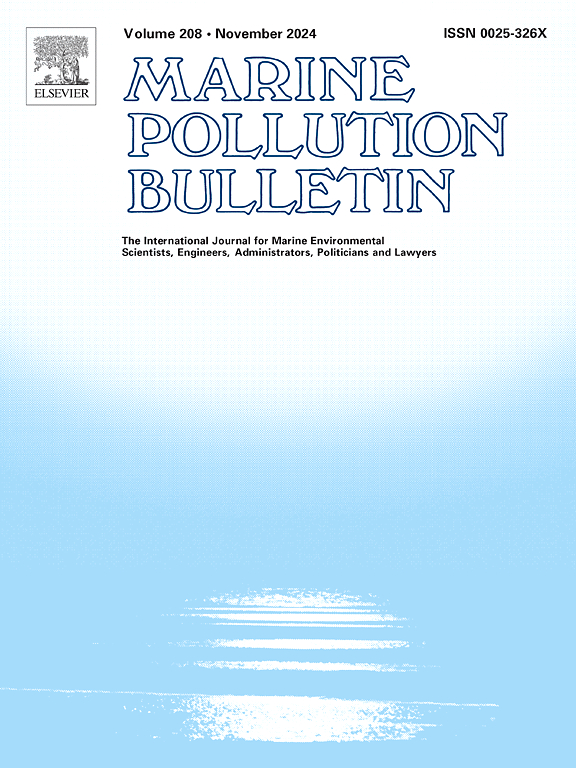PCB contamination in commercial clams from the North Portuguese Atlantic Coast, the North Sea, and Vietnam: An assessment of potential carcinogenic risks to human health
IF 4.9
3区 环境科学与生态学
Q1 ENVIRONMENTAL SCIENCES
引用次数: 0
Abstract
This study investigates the presence of persistent organic pollutants (POPs), specifically polychlorinated biphenyls (PCBs), in edible clams from the North Atlantic Ocean (Portugal and North Sea coastlines) and the South China Sea (Vietnam), available in Portuguese supermarkets. The study unveils the average PCB concentrations in clams, with European specimens containing 64.4 μg/kg wet weight (ww) and Vietnamese having 35.6 μg/kg ww. Both values fall below the European threshold of 75 μg/kg ww, indicating low immediate health risks. However, the study also estimates the daily intake of PCBs, raising concerns about long-term health risks. Moreover, all measured PCB values exceed the international lifetime cancer risk safety limit, with European clams showing a higher cancer risk (1.0E−05) compared to the Vietnamese clams (7.4E−06). The sources of contamination are linked to industrial zones, including oil facilities and recycling plants, particularly in Western Europe, highlighting the need for continuous environmental monitoring.

北葡萄牙大西洋沿岸、北海和越南的商业蛤中多氯联苯污染:对人类健康的潜在致癌风险评估
本研究调查了来自北大西洋(葡萄牙和北海海岸线)和南中国海(越南)的食用蛤蜊中持久性有机污染物(POPs),特别是多氯联苯(PCBs)的存在,这些蛤蜊可以在葡萄牙超市买到。该研究揭示了蛤蜊中PCB的平均浓度,欧洲标本含有64.4 μg/kg湿重(ww),越南标本为35.6 μg/kg ww。这两个数值均低于75 μg/kg ww的欧洲阈值,表明即时健康风险较低。然而,该研究也估计了多氯联苯的每日摄入量,引起了人们对长期健康风险的担忧。此外,所有测量的PCB值都超过了国际终身癌症风险安全限值,与越南蛤(7.4E - 06)相比,欧洲蛤显示出更高的癌症风险(1.0E - 05)。污染源与工业区有关,包括石油设施和回收厂,特别是在西欧,这突出表明需要不断进行环境监测。
本文章由计算机程序翻译,如有差异,请以英文原文为准。
求助全文
约1分钟内获得全文
求助全文
来源期刊

Marine pollution bulletin
环境科学-海洋与淡水生物学
CiteScore
10.20
自引率
15.50%
发文量
1077
审稿时长
68 days
期刊介绍:
Marine Pollution Bulletin is concerned with the rational use of maritime and marine resources in estuaries, the seas and oceans, as well as with documenting marine pollution and introducing new forms of measurement and analysis. A wide range of topics are discussed as news, comment, reviews and research reports, not only on effluent disposal and pollution control, but also on the management, economic aspects and protection of the marine environment in general.
 求助内容:
求助内容: 应助结果提醒方式:
应助结果提醒方式:


